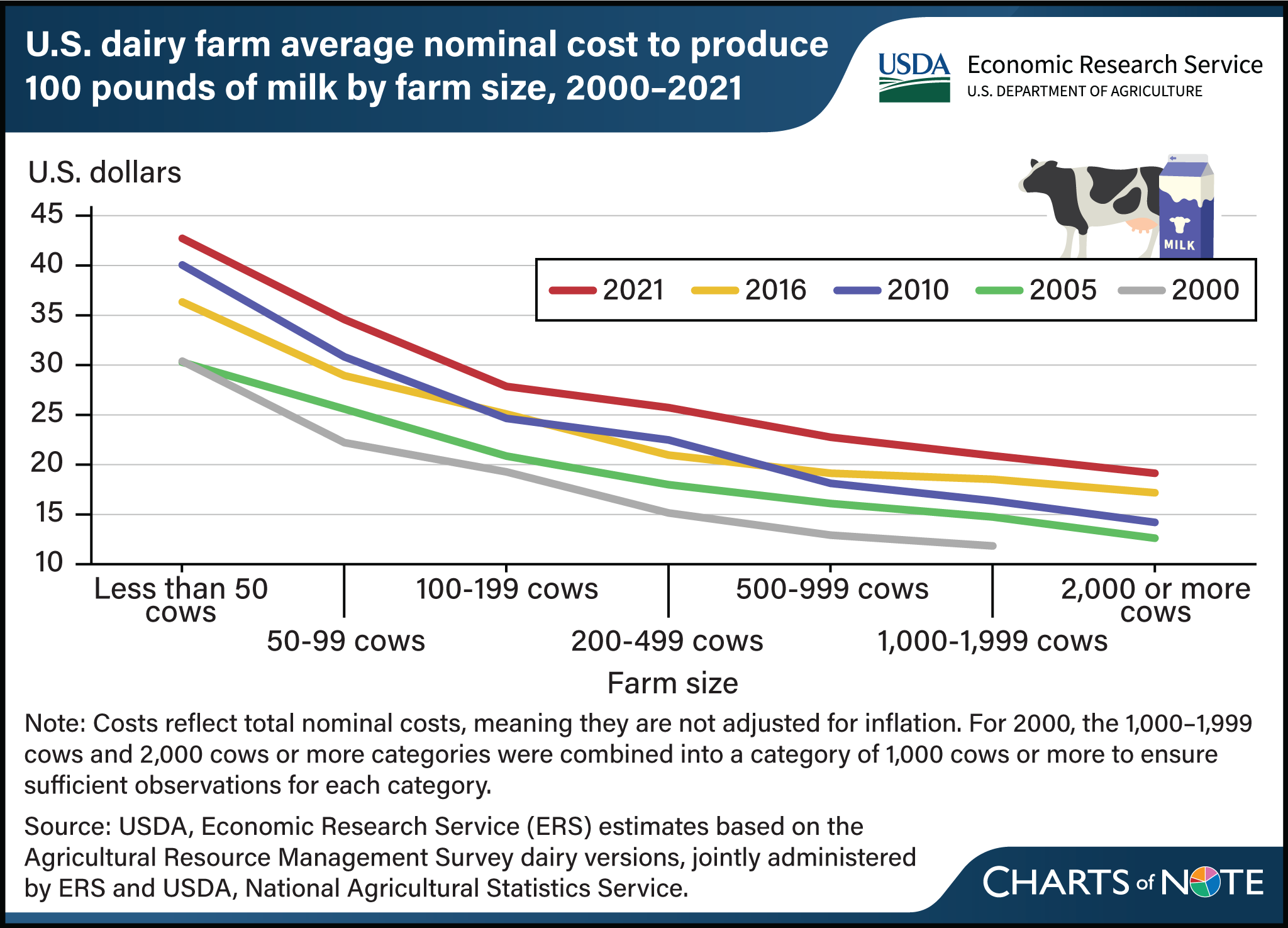Larger dairy farms produce milk at a lower cost per unit than smaller farms
- by Jeffrey Gillespie
- 8/29/2024

U.S. dairy farms vary widely in size, from small (fewer than 50 cows) to large (2,000 or more cows). While many factors can influence a dairy farm’s production cost per unit of milk, such as technology use, management, and input prices paid, farm size can also affect costs. USDA, Economic Research Service (ERS) estimates the cost of milk production by dairy herd size based on dairy-specific versions of the Agricultural Resource Management Survey (ARMS), which are conducted every 5 to 6 years. Costs include operating expenditures, such as feed and veterinary care, and allocated overhead costs, such as buildings, equipment, labor, and land, some of which are economic opportunity costs. Based on the past 5 ARMS dairy surveys, the average total production cost per 100 pounds of milk sold has been consistently lower for dairy farms with larger herd sizes than for those with smaller herd sizes. In 2021, the average total cost per 100 pounds of milk sold was $42.70 for herds with fewer than 50 cows, while for farms with 2,000 or more cows, the cost was $19.14. Increased costs by year reflect the reporting of nominal, not inflation-adjusted costs. Lower per unit production costs for larger dairy farms are attributable at least partly to the ability to spread some expenses over greater output and to greater adoption of advanced technologies, management practices, and production systems. For more information, see the ERS report Structure, Costs, and Technology Used on U.S. Dairy Farms, published in July 2024.


